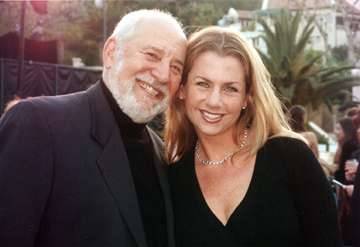Jim Cowan was rattled awake by a series of explosions, and when he ran outside he saw an airplane with big red suns painted on its wings flying low overhead. “I could clearly see the pilot talking into the microphone in his helmet,” he recalled.
Margaret “Bunty” Prabhu remembers an artillery shell hitting a house not far up the street from hers in Honolulu’s Pacific Heights neighborhood. Her older sister, Marilyn, wrote of lung-burning gas mask drills in school and fears of a Japanese takeover of Oahu.
Russ Philbrick remembers one of the first U.S. Navy heroes of World War II who would emerge from the ruins of Pearl Harbor after the Japanese attack on December 7, 1941. Philbrick served with the Medal of Honor winner aboard the aircraft carrier, U.S.S. Lexington.
On this Memorial Day the memories of these three eyewitnesses help commemorate the deaths of 2,403 sailors, Marines, soldiers and civilians killed in the attack.
Rumors abound during fateful day
Jim Cowan was an 18-year-old freshman at the University of Hawaii where he was in the Reserve Officer Training Corp (ROTC) when the Japanese struck. The day after the attack he and his friends joined an emergency volunteer unit of the Hawaii Territorial Guard and he was made a squad leader.
“We were all very excited,” he said. “They sent us out with a rifle and a bandoleer of ammunition to guard public buildings . . .and, yes, we also got very nervous. There were rumors everywhere. Someone has seen parachutes coming down, they’ve poisoned the Honolulu reservoir, and they’re coming back for another attack, things like that. In fact, one night, about two a.m., we heard this very low-flying plane coming over our building and one guy grabbed a Thompson machine gun and ran out and started blasting away at the plane when it flew over. Turned out to be one of our own B17s. Luckily, the Thompson wasn’t much good as an anti-aircraft gun.”
However, one rumor that turned out to be true, Cowan said, was reported snipers in the aftermath of the attack. “I heard the shots and heard the bullets whizzing by us. It was someone with a .22 (caliber) rifle.” It’s not known if the sniper was ever caught.
Cowan later joined the Marines and served as a lieutenant with the occupational forces in Tokyo in 1945. But he never saw action until 1950 when he was sent to fight in the Korean War. There he more than made up for what he had missed in WW II. He won a Silver Star for bravery in action while leading an attack on Chinese machine gun nests at the bloody “Frozen” Chosin Reservoir, where Marines and Army units were trapped by 60,000 Chinese troops in one of the most significant battles of that war. He also received a Purple Heart for a shrapnel wound from a Chinese hand grenade.
The civilians
Bunty Thomas (now Prabhu) was just 10 years old on Dec. 7, 1941, but she remembers certain scenes from that day with clarity. “My sister, Marilyn, woke me up that morning and said, ‘I think they’re having maneuvers, let’s go out and see.’ Then I heard this loud screaming noise going past our house. I thought it was a plane that went on to crash somewhere, or a bomb.”
Her father drove the girls up Pacific Heights Road to a lookout point, and there they could see the Japanese were attacking. “We could see huge billows of smoke and flames rising out of Pearl Harbor, and tiny little specks flying around in the sky, Japanese airplanes.”
Farther up the road they came to a house that had been hit by an artillery shell, apparently that was what they had heard whistling over their house. The round had not exploded, but it caved in a wall of the house. There did not appear to be any casualties. They learned afterwards that it was apparently a misfired U.S. Army artillery round.
Months later, Marilyn, who was then 13, wrote a 34-page memoir. She described her feelings during the attack: “How exciting this is, what an experience to tell my friends and children.” But, she wrote, her father was somber, quiet, saying only, “Something’s wrong.” Not until the next day did she learn from newspapers what a tragic scene she had witnessed. “It never dawned on me that many people were being killed–that we could easily be killed.”
Reality would be drilled into every island resident for months to come. Curfews and blackouts were strictly enforced under martial law. There were frequent air raid drills in schools. And gas mask drills, the same as all GI’s experience in basic training. Students were lined up in a room with gas masks on and the room flooded with tear gas. One-by-one each student was told to take the mask off and run from the room. “Ooh!” wrote Marilyn, “My throat stung inside and out–my arms smarted and my eyes stung. I was choking and I felt like snatching wildly at my throat and arms and eyes.” She couldn’t find the door, until someone finally grabbed her arm and led her out.
Providence
By a twist of fate, Russ Philbrick, now 78, was at sea the day of the attack. He was chief electrician aboard the Lexington, which had been ordered out to sea two days earlier, along with its sister carrier, the Enterprise. Leaving port on a weekend was highly unusual, said Philbrick. Normally, Pacific Fleet ships at Pearl Harbor put to sea for maneuvers during the week and returned to port on Friday. The ill-fated battleship, Arizona, for example, docked in Pearl Harbor after sea exercises near Oahu on the same day the Lexington was steaming out. A bomb that dropped down its smoke stack sank the Arizona, killing 1,103 of the 1,400 men aboard.
Five ships were destroyed that day. Had the Lexington been in port it would have berthed right next to one of them, the Utah, a ship used as a target during exercises but of little value as a target for the Japanese. They may have thought they were hitting the Lexington, Philbrick thinks. “I’ve been told they thought we would be where the Utah was,” he said.
What Philbrick didn’t know at the time was that diplomatic tension was rising between Tokyo and Washington, and because of that the Lexington and Enterprise were hurried out to sea to deliver warplanes to Navy and Marine bases on the islands of Wake and Midway, deep in the Pacific.
But they never got there. On their second day out, the Lexington and all ships at sea in the Pacific received a cable from the commander-in-chief of the Pacific: “AIR RAID ON PEARL HARBOR–THIS IS NO DRILL.” The Lexington arrived back in Pearl Harbor two days later.
“Ships were still smoking, they were still finding bodies. Oh, this was terrible, terrible … guys were walking around with that stare, you know, that shock,” Philbrick recalled with a pang of emotion that still wells up even after nearly 60 years.
Outside of those images, the rest is a blur. He remembers only working day and night for the next “two or three or four days,” loading ammunition and stores aboard ship so it would be fully prepared for the war that had now begun. “Chief (the highest enlisted rank in the Navy) or no, everybody had to work, rank didn’t matter,” he said.
In another stroke of fate, Philbrick was transferred off the Lexington only months before Japanese torpedoes in the Battle of the Coral Sea sank the big carrier, but not before one of his shipmates became the Navy’s first air ace. In one of the Lexington’s first major engagements in the Pacific after Pearl Harbor, a young pilot, called Butch by his comrades, flew up against a wave of nine Japanese bombers on a mission to destroy a multi-ship task force led by the Lexington. Butch shot down five of those bombers. He was awarded the Congressional Medal of Honor. “As a result of his gallant action–one of the most daring, if not the most daring, single action in the history of combat aviation–he undoubtedly saved his carrier from serious damage,” the award citation read. Butch was later killed in aerial combat. His full name was Lt. Edward H. O’Hare, the namesake of Chicago’s O’Hare airport.


